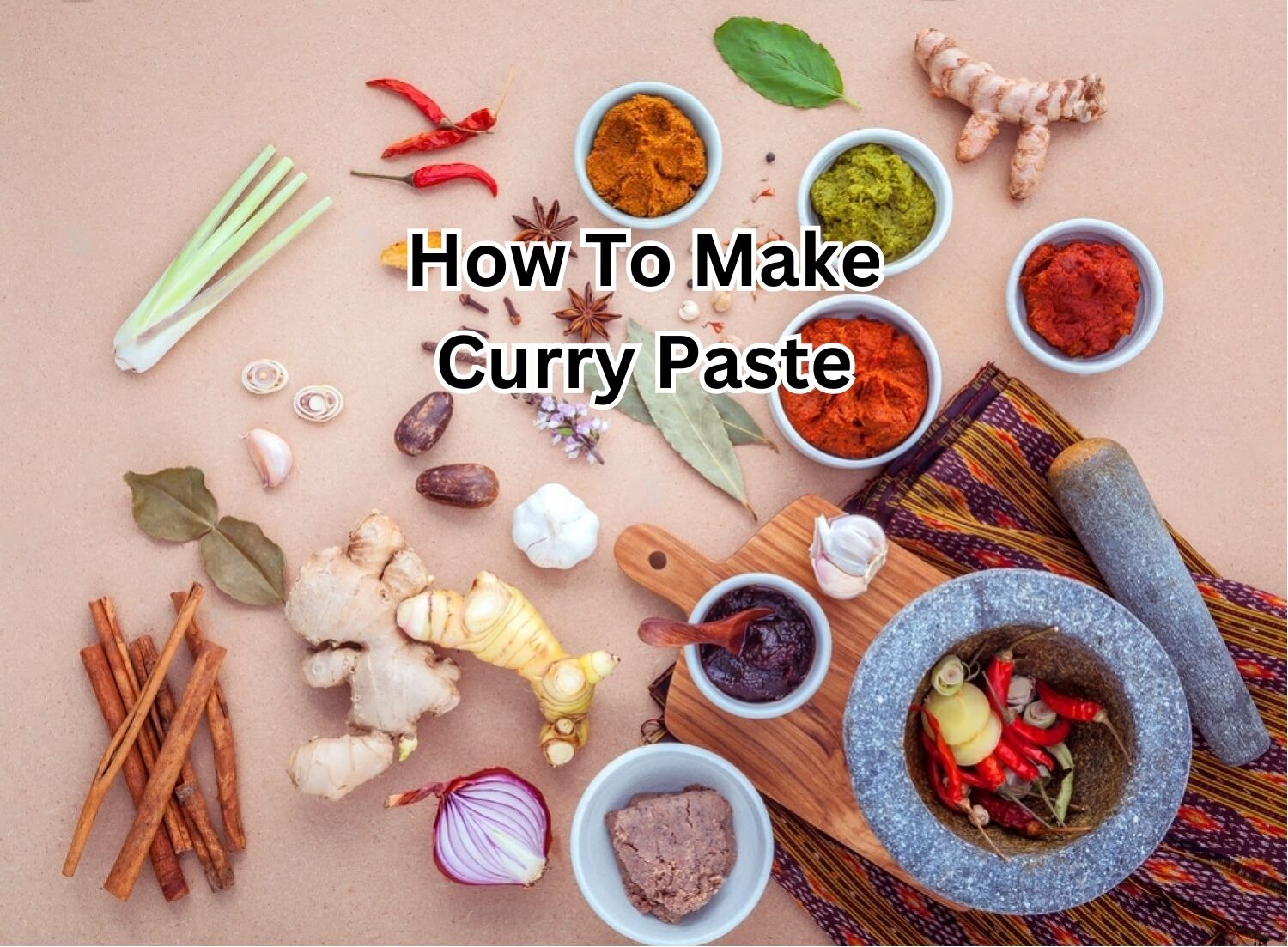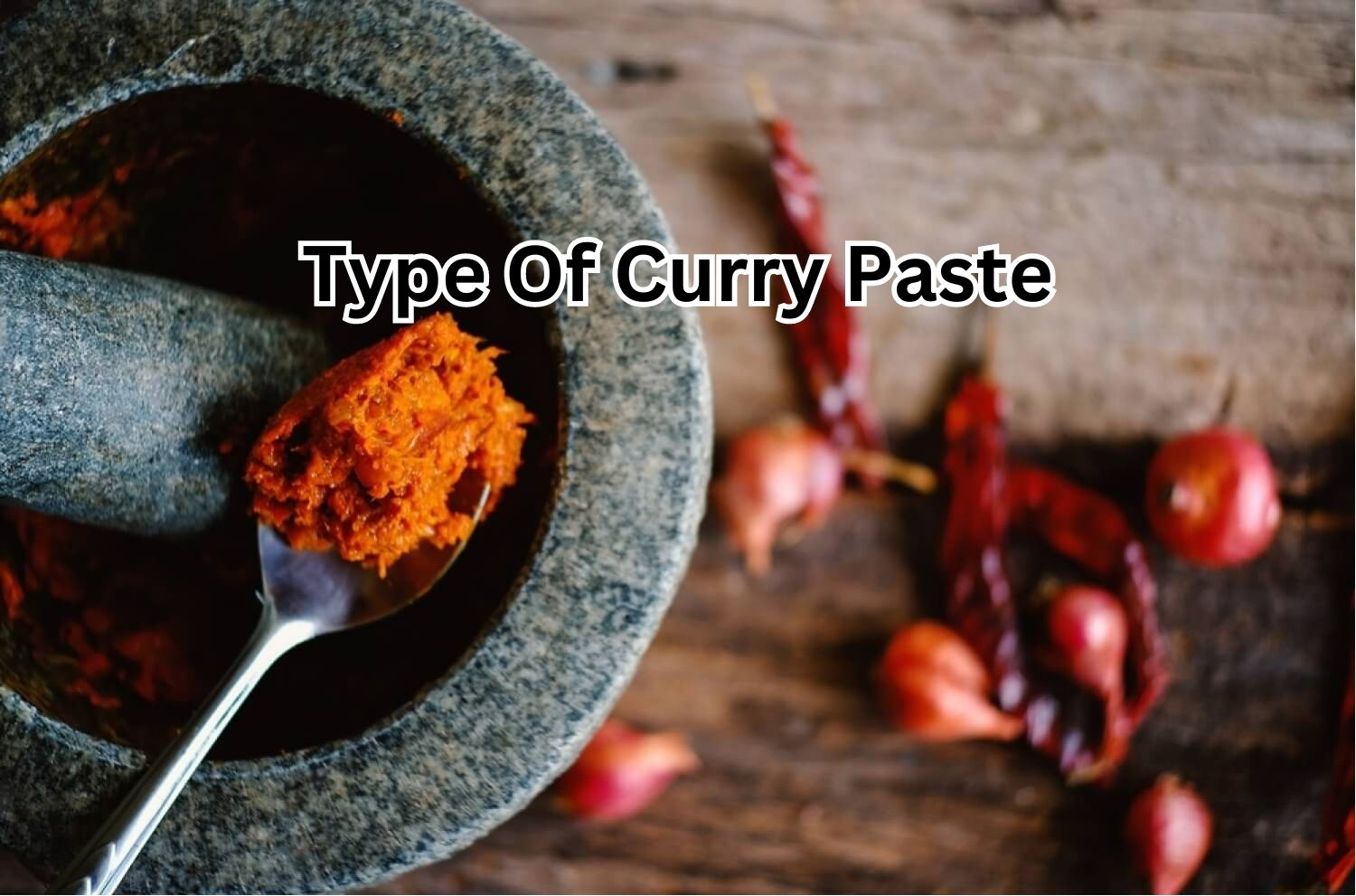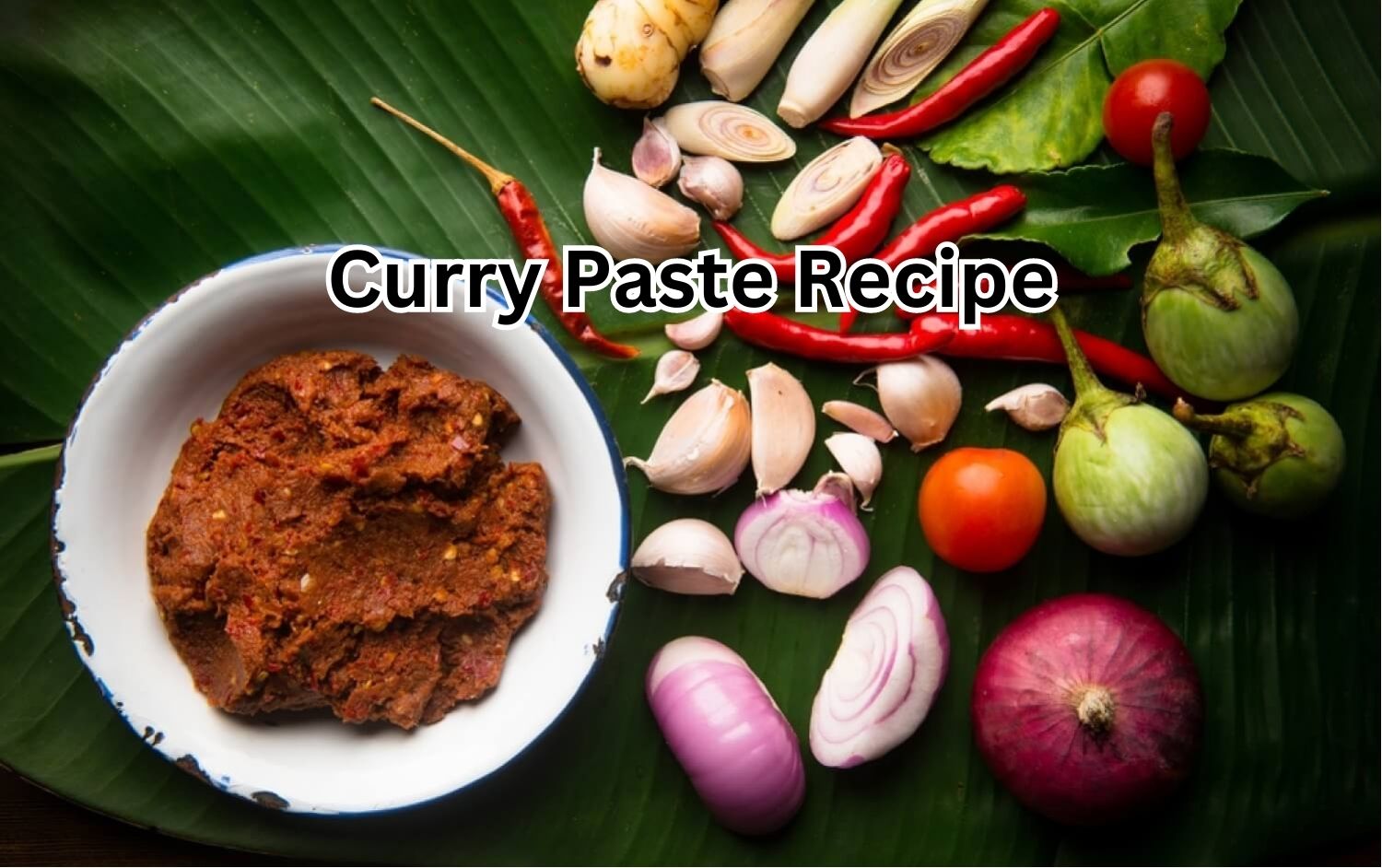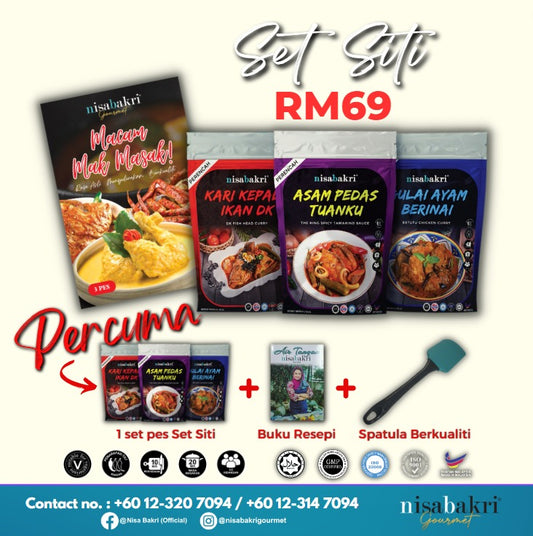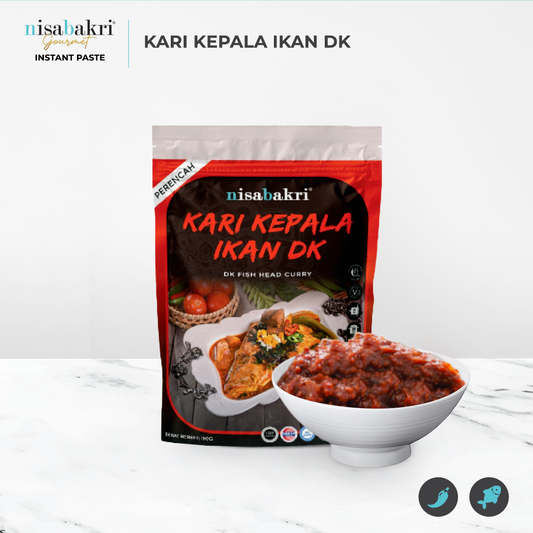Curry paste is a blend of spices, herbs, and other flavoring ingredients that combine to create a concentrated mixture. It is a fundamental ingredient in many Southeast Asian and Indian cuisines, such as Thai, Indian, Malaysian, and Indonesian. It is used to add flavor, aroma, and color to a variety of dishes.
The specific ingredients used in curry paste can vary widely depending on the regional cuisine and the individual recipe. However, some common elements include chili peppers, garlic, ginger, lemongrass, turmeric, coriander, cumin, and shrimp paste.
Curry paste can be found in both wet and dry forms. Wet curry paste is a more concentrated version of the dry paste and often contains oil or water to create a smooth, spreadable texture. On the other hand, dry curry paste is a powder that needs to be mixed with liquid before use.

History of Curry Paste:
The word "curry" itself is thought to come from the Tamil word "Kari," which means sauce or gravy. The use of spice blends and pastes to create flavorful dishes is an ancient tradition in India, dating back at least 4,000 years. Over time, as Indian cuisine spread throughout Southeast Asia, curry pastes and spice blends evolved to reflect local ingredients and tastes.
In Thailand, for example, curry paste is made with aromatic herbs and spices, including lemongrass, galangal, coriander, cumin, and shrimp paste. The paste is a base for various curries, soups, and stews.
In Indonesia and Malaysia, curry pastes are typically made with chili peppers, turmeric, garlic, shallots, and other spices and are often used in rich, coconut-based curries. In India, curry pastes are known as masalas. They are typically made with a mix of spices, such as cumin, coriander, turmeric, and garam masala, blended with ginger, garlic, and other ingredients to create a flavorful paste.
What are the Health Benefits of Curry Paste?
Curry paste is a blend of spices and herbs commonly used in South Asian cuisine. It is known for its bold and complex flavors and has several potential health benefits. Here are some of the health benefits of curry paste:
-
Many of the ingredients in curry paste, such as turmeric, ginger, and garlic, are rich in antioxidants.
-
Some of the spices in curry paste, such as cumin, coriander, and fennel, improve digestion.
-
Curry paste contains several spices, such as turmeric, ginger, and garlic, that have immune-boosting properties. These spices may help strengthen your immune system and protect against infections and diseases.
-
Some research suggests that the spices in curry paste may help promote weight loss by boosting metabolism and reducing appetite.
It's important to note that the health benefits of curry paste may vary depending on the specific ingredients used and the quantity consumed. Additionally, some store-bought curry pastes may contain added sugar and preservatives, so it's essential to read labels carefully and choose high-quality, natural options when possible.
Difference Types of Curry Paste:
There are many different types of curry paste, each with its unique flavor and level of spiciness. Here are some of the most common types of curry paste:
Red Curry Paste:
Red curry paste originated in Thailand and is made with red chili peppers, garlic, lemongrass, shallots, ginger, coriander, and other spices. It is known for its spicy and savory flavor and is a critical ingredient in many Thai curries. Red curry paste can be used in various dishes, including soups, stews, and stir-fries. It pairs well with meats such as chicken, beef, and shrimp and with vegetables like bell peppers, eggplant, and bamboo shoots.
To use red curry paste, add it to your recipe along with other ingredients such as coconut milk, fish sauce, and sugar.
Yellow Curry Paste:
Yellow curry paste is a type of curry paste that is popular in Southern Thailand and is made with turmeric, cumin, coriander, garlic, and other spices. Yellow curry paste can be found in many grocery stores or online. Homemade yellow curry paste can be customized to your preferences by adjusting the number of spices and herbs used. Yellow curry paste is often considered to be one of the milder curry pastes.
However, it still contains a variety of flavorful ingredients that can add depth and complexity to your dishes. It is an excellent choice for those who prefer less spicy foods or who are new to Thai cuisine.
Green Curry Paste:
Green curry paste is a type of curry paste that originated in Thailand and is made with green chili peppers, lemongrass, galangal, garlic, and other spices. It has a mild to medium level of spiciness and a distinct herbal flavor from the use of fresh herbs. Green curry paste is often used in Thai curries, soups, and stir-fries, and pairs well with ingredients such as chicken, beef, shrimp, eggplant, and bamboo shoots.
Green curry paste is typically cooked in a mixture of coconut milk and other ingredients such as vegetables, meats, or seafood. It is often served with rice or noodles.
Massaman Curry Paste:
Massaman curry paste is a type of curry paste that originated in Thailand and is a blend of Thai and Indian flavors. It typically includes spices such as cinnamon, cardamom, cloves, coriander, cumin, and other ingredients like lemongrass, galangal, and shrimp paste. Massaman curry paste has a mild to medium level of spiciness and a slightly sweet and aromatic flavor profile.
What are the popular foods made with Curry Paste?
Curry paste is a versatile ingredient that can be used in a wide variety of dishes. Here are some popular foods made with curry paste:
Thai curries:
Green, red, yellow, and massaman curries are all made with curry paste and are popular dishes in Thai cuisine. They typically include a mix of coconut milk, meat or seafood, vegetables, and other ingredients.
Soups and stews:
Curry paste can add flavor to soups and stews, such as tom yum soup and coconut curry lentil soup.
Appetizers:
Curry paste can be used to flavor appetizers such as samosas, spring rolls, and curry puffs.
What makes the Curry Paste by Nisabakri Gourmet special?
Nisabakri Gourmet curry pastes made with traditional techniques and unique blends of spices. The special qualities of a Nisabakri Gourmet curry pastes make it bestselling product. Here are some special curry paste by Nisabakri Gourmet:
Instant Paste Gulai Ayam Berinai:
Instant Paste Gulai Ayam Berinai is a specific product made by Nisabakri Gourmet. It is a pre-made curry paste that is designed to make it easy for consumers to cook special dishes. The curry paste is made with a blend of special spices, including turmeric, coriander, cumin, lemongrass, and chili peppers, among other ingredients. It have a rich and aromatic flavor with a mild to medium level of spiciness.
Instant Paste Kari Kepala Ikan DK:
Instant Paste Kari Kepala Ikan DK is a specific product made by Nisabakri Gourmet. The curry paste is made with a blend of Indonesian spices, including turmeric, coriander, cumin, ginger, garlic, and chili peppers, among other ingredients. It is said to have a rich and savory flavor profile with a medium level of spiciness.
To use the paste, the fish head is typically fried or grilled and then simmered in the paste along with coconut milk and other ingredients such as vegetables and herbs until the fish is tender and infused with the flavors of the curry. The dish is often served with rice or other starchy sides.
Conclusion:
Curry paste is a versatile ingredient that can add flavor and spice to a wide variety of dishes. It is used in various dishes around the world. If you want to buy best flavor curry pasted, visit nisabakrigourmet.
FAQS:
1. How to use curry paste in vegetarian or vegan dishes?
Curry paste is a great ingredient to use in vegetarian and vegan dishes because it adds a lot of flavor and complexity to plant-based meals. Use curry paste as a base for vegetarian or vegan curry dishes. You can use a variety of vegetables such as bell peppers, eggplants, potatoes, and cauliflower, along with coconut milk, and vegetable broth to make a flavorful curry.
2. Can I make my own curry paste at home?
You can definitely make your own curry paste at home. Making your own curry paste can be a fun and rewarding way to experiment with different flavors and customize the paste to your liking.
3. How to make curry paste from curry powder?
While it's best to make curry paste from whole spices, you can make a quick version of curry paste using curry powder. In a bowl, combine the curry powder, minced garlic, grated ginger, and salt. Add the vegetable oil to the mixture and stir until the ingredients are well combined. Add the water to the mixture, and stir until a smooth paste forms. Use the curry paste immediately or store it in an airtight container in the refrigerator for up to a week.
4. How long can I store curry paste in the fridge or freezer?
Curry paste can be stored in the fridge or freezer for varying lengths of time depending on how it was prepared and stored. It's important to note that the quality and flavor of curry paste can deteriorate over time, so it's best to use it within the recommended time frame for optimal flavor and quality.
